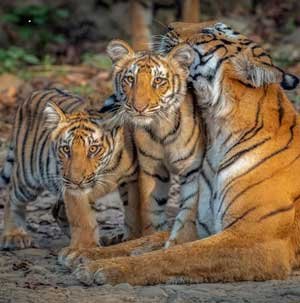
Dhikala Tiger Tracing Tour
Thrilling Dhikala Tiger Tracing Tour in the Heart of Corbett.
Jim Corbett National Park
Corbett Tiger Reserve, also known as Jim Corbett National Park, is located in the Nainital and Pauri Garhwal districts of Uttarakhand, India. It is the oldest national park in India and was established in 1936 as Hailey National Park. Later, it was renamed after the famous hunter and conservationist Jim Corbett. The reserve is one of the most popular wildlife destinations in India and plays a key role in tiger conservation.
Corbett Tiger Reserve is the oldest national park in India and a pioneering site for wildlife conservation.
Corbett’s vegetation is rich and varied due to its altitudinal range and rainfall pattern.
Corbett is divided into several ecotourism zones, each with unique landscapes and wildlife experiences :
Dhikala Zone : Entry - Dhangarhi Gate
Bijrani Zone : Entry - Amdanda Gate
Jhirna Zone : Entry - Dhela Gate
Dhela Zone : Entry - Dhela Gate
Durga Devi Zone : Entry - Durga Devi Gate
Sitabani (Buffer) : Entry - Sitabani Gate
Nearest town : Ramnagar (approx. 15 km from the park)
Nearest railway station : Ramnagar Railway Station
Nearest airport : Pantnagar Airport (approx. 80 km); Dehradun and Delhi are also accessible by road.
Distance from Delhi : About 250 km (6–7 hours by road)
